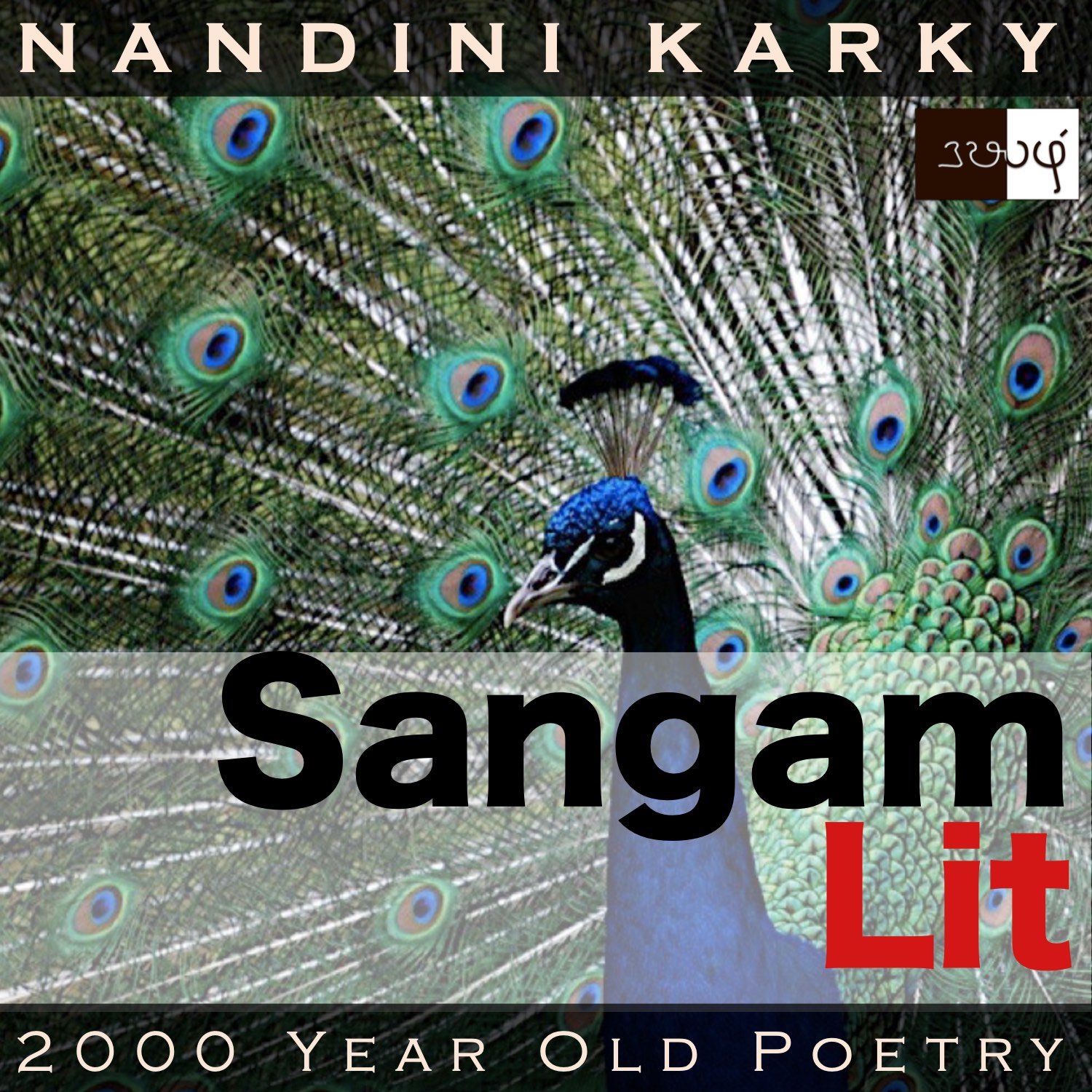Podcast: Play in new window | Download
Subscribe: Apple Podcasts | Spotify | Amazon Music | Android | iHeartRadio | TuneIn | RSS | More

In this episode, we perceive an echo of a lady’s trust, as portrayed in Sangam Literary work, Natrinai 357, penned by Kuramagal Kuri Eyini. Set in the mountains of ‘Kurinji’, the verse speaks in the voice of the lady to her confidante, allaying the worry in her friend’s heart.
நின் குறிப்பு எவனோ?-தோழி!-என் குறிப்பு
என்னொடு நிலையாதுஆயினும், என்றும்
நெஞ்சு வடுப்படுத்துக் கெட அறியாதே-
சேண் உறத் தோன்றும் குன்றத்துக் கவாஅன்,
பெயல் உழந்து உலறிய மணிப் பொறிக் குடுமிப்
பீலி மஞ்ஞை ஆலும் சோலை,
அம் கண் அறைய அகல் வாய்ப் பைஞ் சுனை
உண்கண் ஒப்பின் நீலம் அடைச்சி,
நீர் அலைக் கலைஇய கண்ணிச்
சாரல் நாடனொடு ஆடிய நாளே.
The verse opens with the words ‘நின் குறிப்பு எவனோ’ meaning ‘what are your thoughts?’ and seems to probe a person’s mind. The hills of Kurinji reveal their presence in ‘குன்றத்துக் கவாஅன்’ or ‘the slopes around the peaks’. Thereafter, a significant phrase ‘பெயல் உழந்து உலறிய மணிப் பொறிக் குடுமி’ meaning ‘sapphire-dotted crest that has dried since the prior rains’ brings forth both the past and the present of this physical attribute of a ‘மஞ்ஞை’ or ‘peacock’. The oft-encountered comparison between ‘a woman’s kohl streaked eyes and blue-lilies’ shade the lines of this verse in ‘உண்கண் ஒப்பின் நீலம்’. The phrase ‘கலைஇய கண்ணி’ sketches in words, ‘the rumpled garland’ belonging to the ‘சாரல் நாடன்’ or ‘man from the mountains’. Ending with ‘ஆடிய நாளே’ meaning ‘those days of delight’, the verse reverberates with reminiscence!
The man and lady had been leading a love relationship and the man had been trysting with the lady for a while. The lady’s confidante worries that the man seems to be taking no steps towards formalising his union with the lady. Understanding her friend’s mind, the lady says to the confidante, “How do you see this, my friend? The way I see it, even though it seems as if it will not remain with me, it surely will not let my heart hurt at any time. In the slopes of the mountain peak, at a distance, in an orchard, there dances a peacock, whose sapphire-hued, dotted tuft has dried up, since the time it was moistened by the rains. In that picturesque place, surrounded by rocks, there’s a wide-mouthed fresh pool of spring water. Therein, in the hue of kohl-streaked eyes, blooms blue-lilies. The lord of the mountains had his garland tangled when he went to pluck those flowers. I vividly remember that day when I delighted so, with him!” With these words, the lady conveys to the confidante that there is love and trust in her to bear with the man’s delay in seeking her hand in marriage.
Now, for the nuances! The lady starts by peering into the mind of her friend, seeing her worried expressions. After asking what was in her friend’s mind, without waiting for an answer, the lady proceeds to express what is in her own mind. She talks about something, we don’t know exactly what, but says that although that something was not a permanent event, it would still keep her heart from aching. Wonder what that precious thing may be! From relaying these abstract perceptions, she turns in the direction of the real world around her. Pointing to the mountain peaks far away and a grove therein, the lady describes a dancing peacock, whose crest, once moist in the rains, has now dried up. Then, the lady turns to the fresh-waters of a spring nearby and recollects how, one day, the man, with a garland, disheveled by the waters, plucked blue-lilies for her. The lady ends by saying how those days of delighting with the man remains fresh in her mind. Now, we understand that the something that she referred to, earlier, is the memory of her relationship with the man and she emphasises to her friend that this memory will always keep her heart from hurting.
In that scene, where the peacock’s tuft has dried up and yet it dances, the lady places a succinct metaphor for how although the man has been delaying seeking her hand, in the memory of those beautiful days with him, her heart remains moist in love. A picturesque metaphor that set me on the trail of a peacock’s crown-like tuft! Often we get some enamoured by a peacock’s tail that we do not notice the other parts of the bird. However, as this ancient poet seems to have perceived ages ago, science today explains that there is a hidden significance to the peacock’s crest. As we know, the tail is found only in the male of the species whereas the crest is found both in the male and the female. Some researchers, as detailed in an article in The Atlantic, claim that a male peacock makes its crest resonate in the same frequency of its tail feathers and a female reads that reverberation through her own crest. The seemingly pointless tuft on the heads of peafowls seem to be some acute biological sensor, relaying more information that we can fathom. Just like how a female peafowl feels its mate in its head, the lady in this ancient verse, seems to be telling her friend that she can sense the man’s love in her head. The thoughtfulness in wanting to relieve a friend’s anxiety and the trust in the love of someone are some extraordinary emotions that we can sense in this slice from the past!




Share your thoughts...